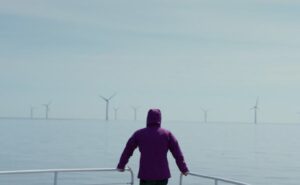Simec Atlantis Energy, the company behind the world’s largest planned tidal stream project in the world, unveiled last week designs for its new 2MW tidal power turbine system – the largest and most powerful single axis turbine available on the commercial market.
While new renewable energy technologies such as tidal stream power are in their relative infancy in terms of growth, they have been under development for many years. Atlantis started out as an Australian company before shifting to Singapore to access capital, and is now part of Sanjeev Gupta’s GFG Alliance group.
According to Drew Blaxland, Director of Turbine and Engineering Services at Simec Atlantis, their new tidal power turbine – the 2MW AR2000 – is “the culmination of 15 years of investment, relentless experimentation, rigorous testing, and subsea operation.”
More specifically, the AR2000 has been in development for over two years and is based on the success of its predecessor, the AR1500 which is in operation at the 6 MW MeyGen tidal stream array off the north tip of Scotland.

“Not only will it be the largest single rotor turbine in production,” explained Blaxland, “it will be the backbone of a highly efficient and cost-effective generation system capable of deployment in each of our key target markets in the UK, France, Channel Islands, Asia, Australia and Canada.”
Tidal stream technology has already proven itself capable of sustained and efficient electricity generation.
The MeyGen array was completed in March of this year, but since the beginning operations throughout construction through to the beginning of July, the project generated over 8 GWh of electricity to the UK grid, which included a world record 1.4 GWh in a single month – a figure which would generate the equivalent energy for 5,420 households.
The new AR2000 is billed as featuring “an innovative new electro-mechanical pitch system, 360 degrees of yaw, upgraded onboard health monitoring and diagnostic systems, and optimised critical system redundancy.”
Simec Atlantis Energy expect that the turbine will run with a 25-year life span and will be offered as part of a complete rotor to grid tidal generation system which includes an array architecture allowing multiple turbines to be connected in parallel which, kin turn, will reduce the cost and impact of the subsea infrastructure.
“Our Turbine and Engineering Division in Bristol is an aggregation of the best, brightest and most experienced tidal power engineers in Europe,” Blaxland continued. “We lead the world in turbine design, subsea connection and offshore intervention operations.
The AR2000 draws on lessons learned during more than 13,000 hours of operation of the Marine Current Turbines SeaGen turbine in Northern Ireland and 4,000 operational hours of the AR1500 in Scotland.
The AR2000 will enable multi-turbine connection onto a single power export cable to reduce cost and its larger rotor diameter will deliver greater efficiencies over a range of flow regimes.
“The AR2000 system has been designed to deliver a lower levelised cost of energy and increased reliability. Combining a larger rotor diameter with a drive train capable of being daisy-chain linked, optimised redundancy and quick connection, will deliver an offshore generation system that can compete with other comparable sources of renewable generation when deployed at scale.”








